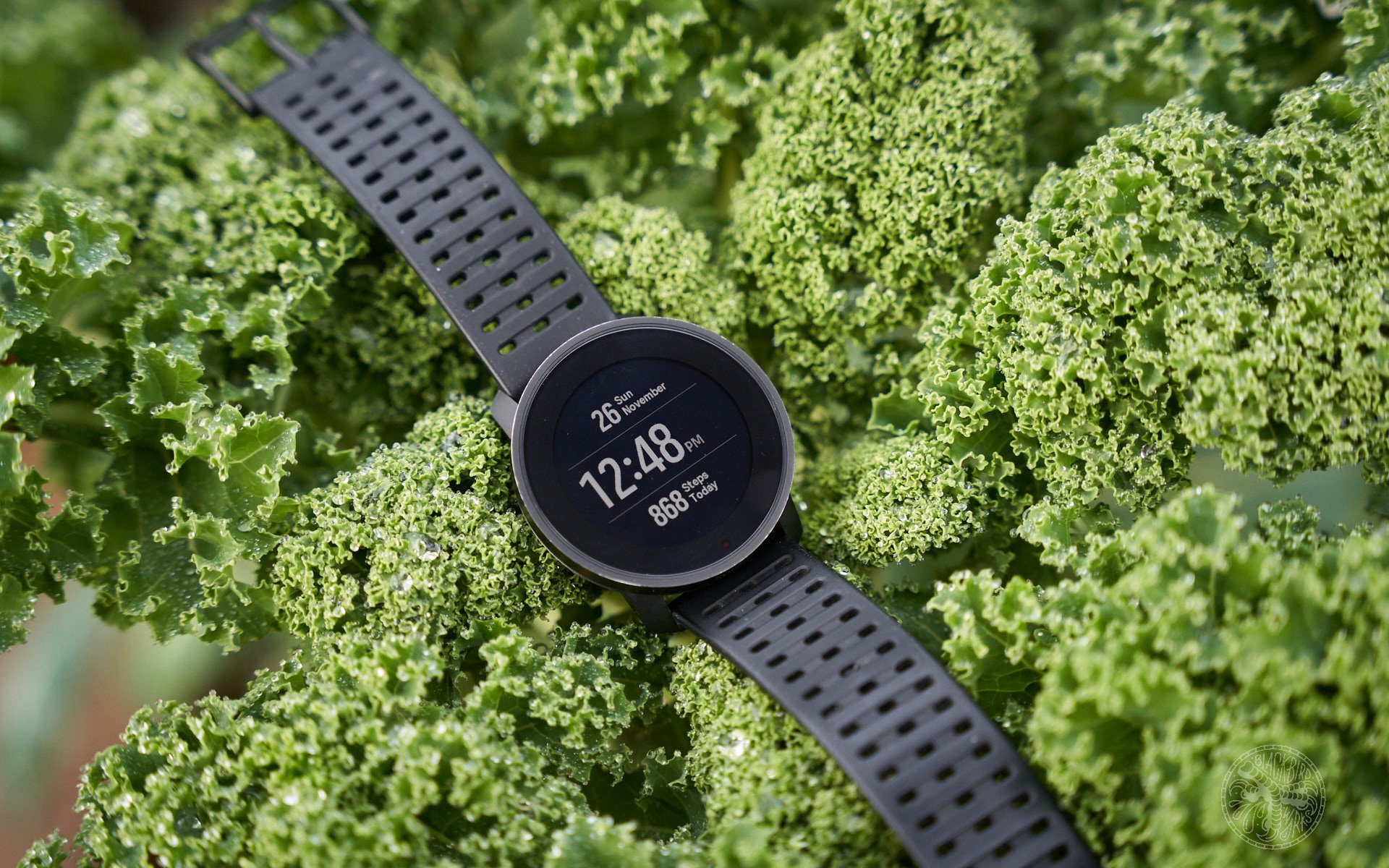
Review
Suunto 9 Peak Pro Wrist Watch
Before we get ahead of ourselves, I should let you know what you are in for here. This review focuses on the Suunto 9 Peak Pro's compatibility with my lifestyle as an active mountain goer on the North Shore. It is not a detailed examination of every available feature, and it deliberately excludes analysis of the watch's running performance, as I only run to catch the bus. My routine primarily involves mountain biking, hiking, weight training, and commuting/gravel riding. Watch features that are important to me include heart rate and GPS accuracy (with a particular emphasis on distance and elevation gain), sleep data analysis, and an intuitive and enjoyable user experience. Newly added to this list is a watch that doesn't cause bleeding.
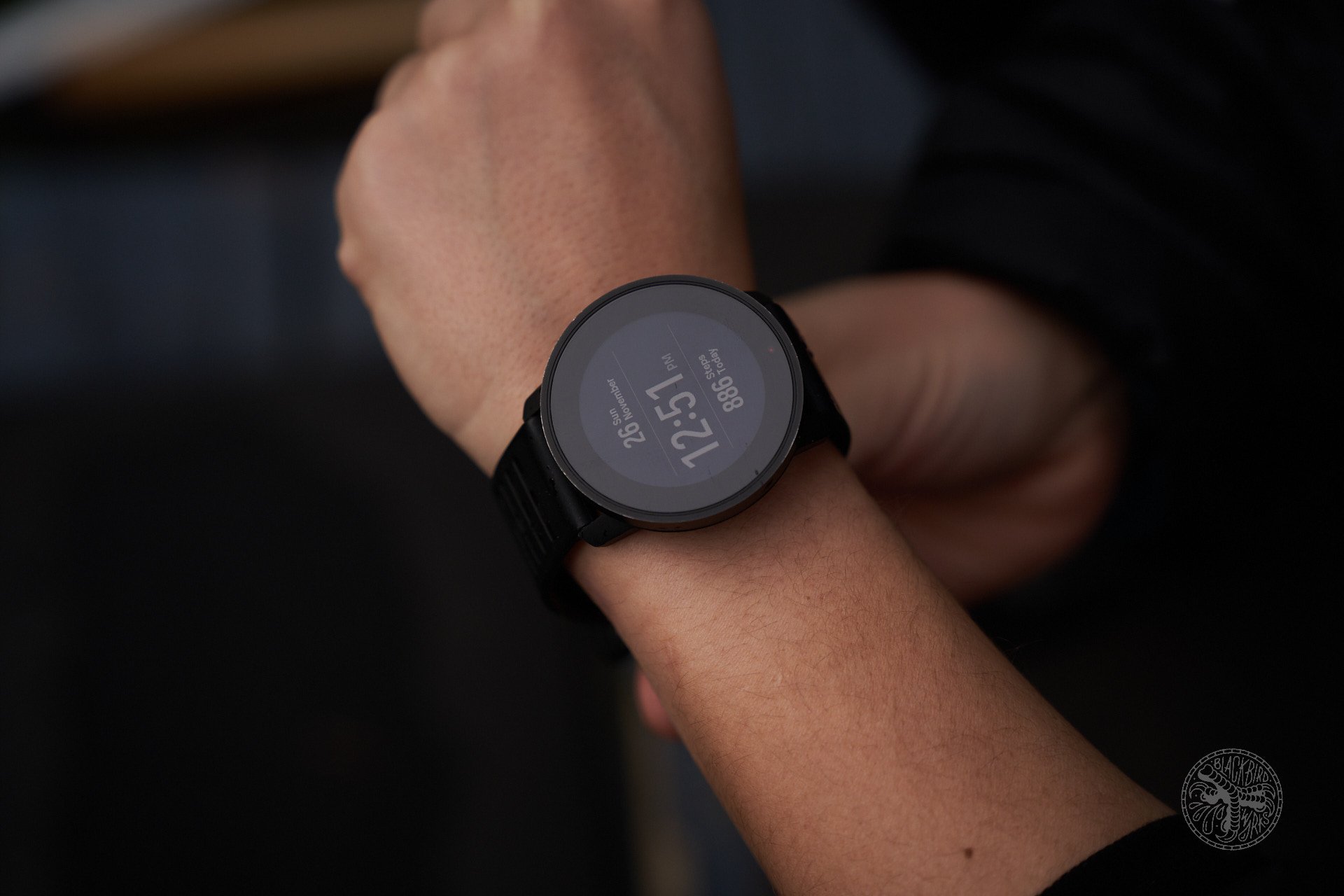
A simple home screen covered with a scratch resistant sapphire crystal lens. The 'thick' bezel is hard to see as it blends in with the background.
Design & UX
The Suunto 9 Peak Pro is a multisport watch with a 43mm diameter, stainless steel bezel and a scratch-resistant sapphire crystal. When picking up the watch, it has a nice weight to it, not that it's heavy at 64g, but it feels well built and durable. At first glance, this watch is very beautifully designed. It has a minimalist look with three buttons on the right side of the case and a fairly large bezel that is not noticeable until the display light is on. There are many reviews that mention this as a downside but it didn't bother me at all.
To move through the menus, you can either use the touch screen or the three hard buttons on the left side of the watch which respectively perform up, down and select navigation. To navigate back to the previous page, you have to hold down the middle button. I find myself using the buttons to navigate while I am doing an activity and only use the touch screen when I am at home or work. I personally find the buttons easier to use and the click is crisp and satisfying. Setting up the watch was simple and I find it straight forward to change settings after realizing which ones are controlled from the watch vs from the app.
The battery life is insanely impressive. I’ve easily gone two weeks without charging it while having a medium background light setting. In addition, it is fast charge enabled so charging for 5 minutes will give you multiple hours of battery use. I never thought I would care that much about battery life but it has been exceptionally convenient. If only our phones would last that long. The charger could have a better designed as the watch often doesn't sit perfectly on the charger and fails to connect.
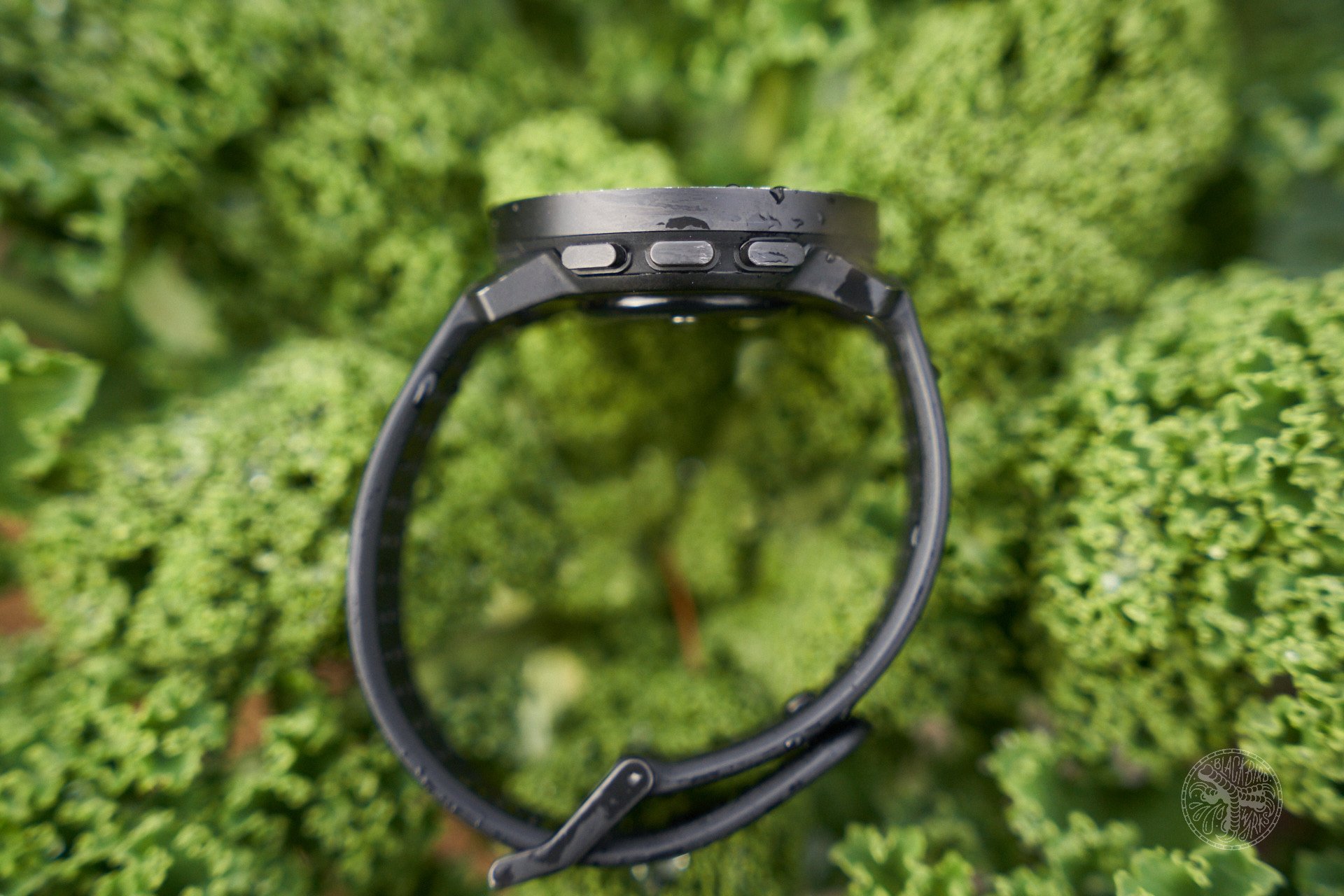
The three buttons provide a pleasant, tactile sensation when pressed
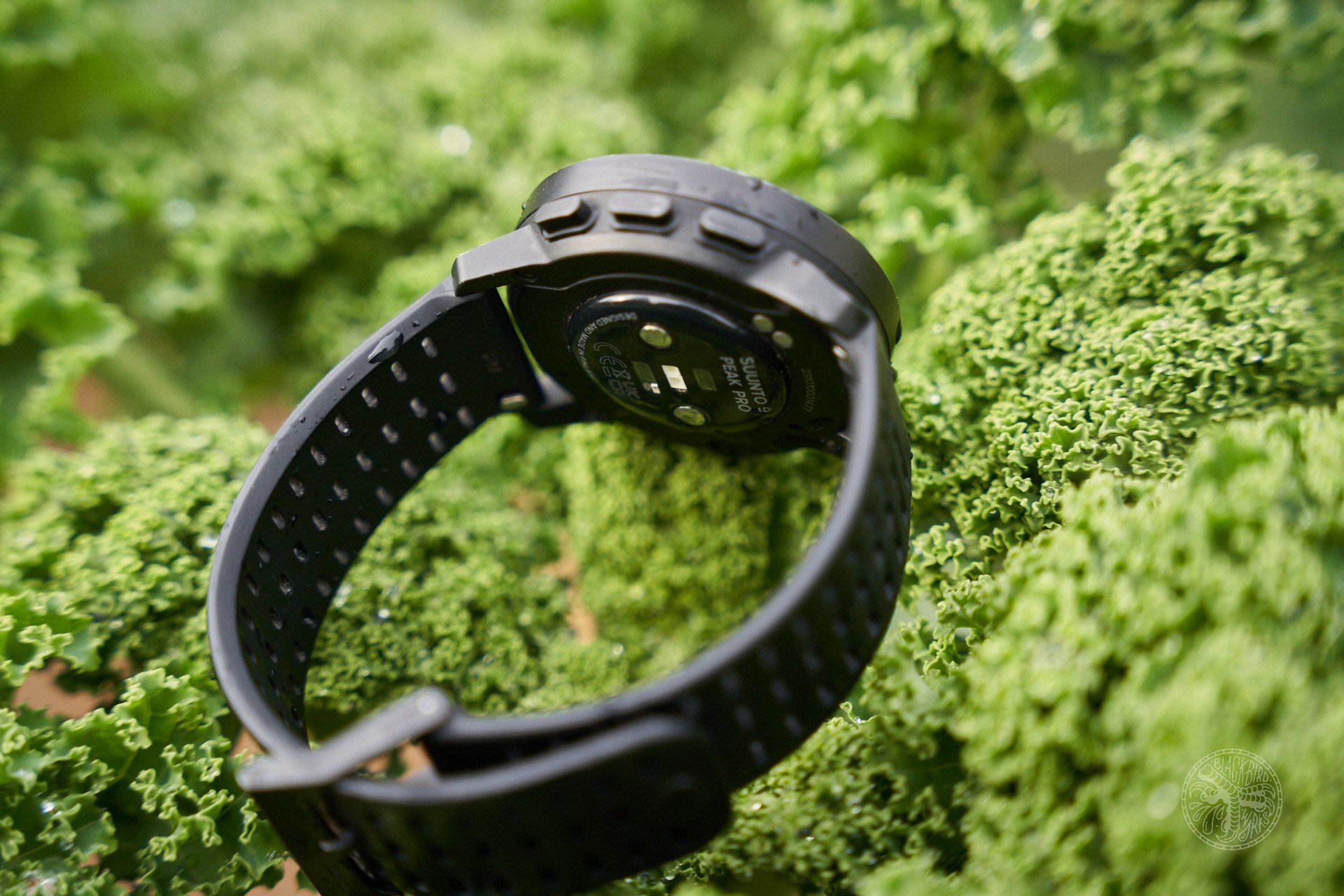
Be aware that the heart rate sensor has quite a blinding light if you decide to wear the watch at night.
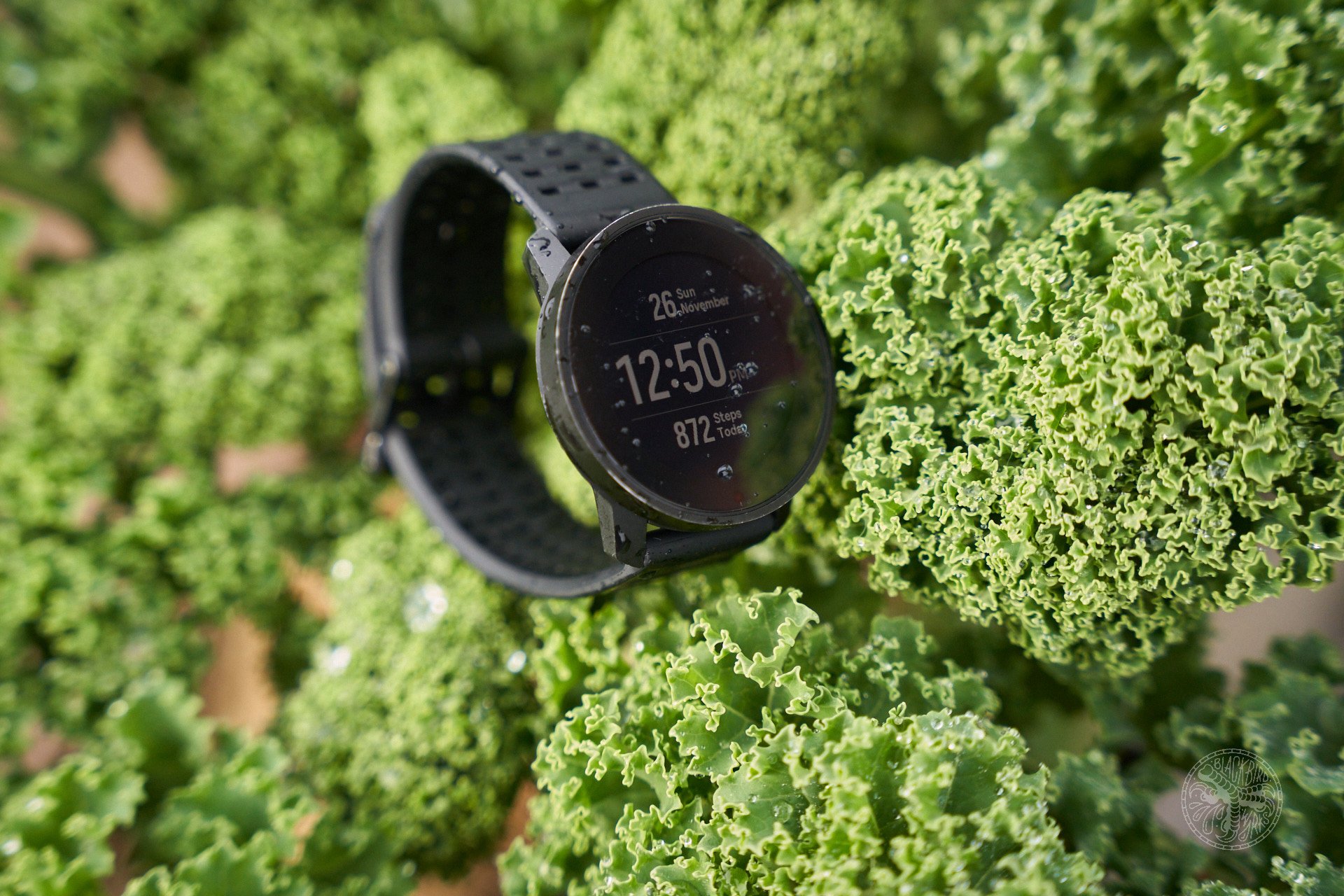
The wings of the strap mount are what rubs on my skin when riding. They are somewhat sharp.
Riding impressions
I’m not going to sugar coat things, it was a rough start with the 9 Peak Pro. The challenging part was getting the watch comfortable enough so I didn't have to stop during a descent or rage quit and throw the watch in my bag. Breaking it in required many frustrating adjustments and blood was shed. In order for the watch not to vibrate and rub to a point of causing some broken skin, it needs to sit high on my wrist and be strapped extra tight. I'll note that this particular rubbing occurs only when mountain biking. I didn't experience it when gravel riding or hiking.
We did reach out to Suunto about this issue and they recommended either wearing the watch higher on the wrist where there is ”more meat and less bone” or alternatively, to try a different strap. Wearing the watch higher did the trick for the most part, at the expense of having it sit in a les natural position. Regardless, I have made it work with the help of some callused skin and my stubborn personality. I have doubts that a typical consumer would be as persistent and willing to endure the discomfort after paying out of pocket for this.
There is something off with the design in order for it to feel comfortable when mountain biking on technical terrain. If you are curious about this watch for running, I think it would be fine, but I would still suggest a trial before committing.

Evidently, the watch gets more comfortable in the fall as long sleeves help dampen vibrations
Sleep Data
I started out by wearing the watch at night as I was interested in analyzing my heart rate data and investigating some terrible sleep patterns. I was disappointed after realizing the watch doesn’t pick up on my sleep patterns as accurately as I would have liked. The watch lets you set up general sleep tracking, however after monitoring the data in the app, I realized it doesn’t actually pick up on when you fall asleep and then physically get up in the morning.
An hour after waking up and starting my morning, I would acknowledge the watch and a “Good Morning” message pops up on the screen. Wow! I slept a whopping 10 hours on a Tuesday night and should be feeling tip top. In reality, I feel like a sack of potato’s after rolling around in bed for two hours trying to fall asleep and getting up to pee at 4am, both of which the watch did not register. Disappointed, I stopped wearing the watch at night and opted instead to gauge my sleep quality based on morning heart rate readings and the classic method of subjectively rating my energy levels on a scale from 1 to 10.
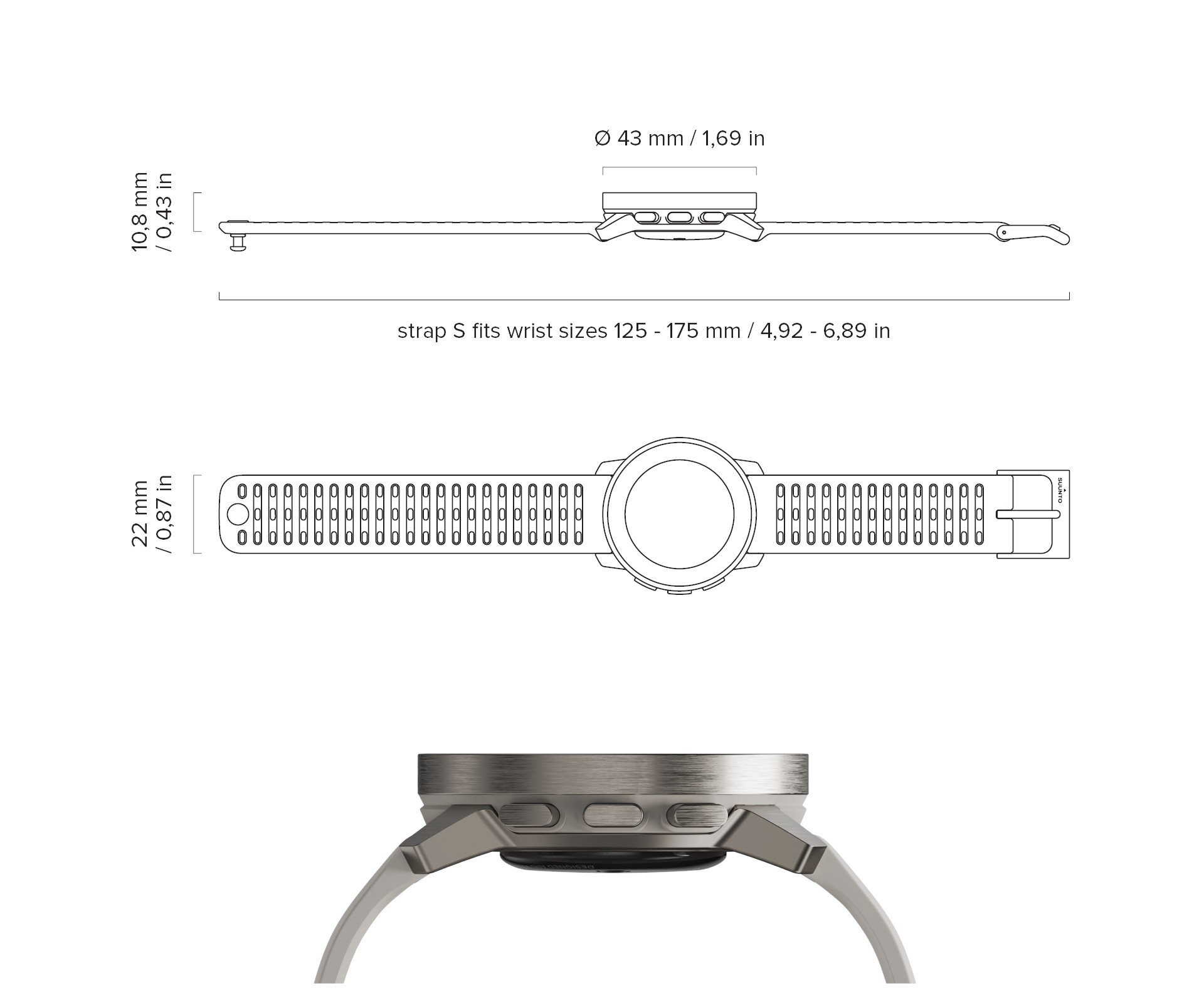
Activity mode
I quite enjoy the watch once it is in activity mode. The customization is endless for screen preferences on all your favourite activities. This setting can be customized through the app while your watch is connected by selecting sport mode customization. I have different settings for hiking, gravel biking and mountain biking. Before and during an activity you can easily enable various features like low power mode and breadcrumb navigation. You can also easily design interval workouts through the app and sync them to the watch.
There is an impressive 95 pre installed activity modes ready to test on the watch. Not that I will be "mermaiding" anytime soon but perhaps a nice to have for some.
GPS
Compared to the previous model, the 9 Peak Pro claims increased GPS accuracy because it allows 4 concurrent systems and 32 satellites at once. Additionally, it has a new all-systems GNSS chipset (not multiband). I found the GPS accuracy very good when testing it in open remote alpine settings as well as rainy mountain conditions where cloud coverage is thick. I have yet to see any weird glitches in GPS data.
There was nothing unusual to report on distance and elevation data from the Suunto 9 peak pro. Activity data gave very similar readings to my Garmin edge 520 and Strava when recorded through my phone.

Customized activity mode with distance and elevation on top, heart rate on the bottom.
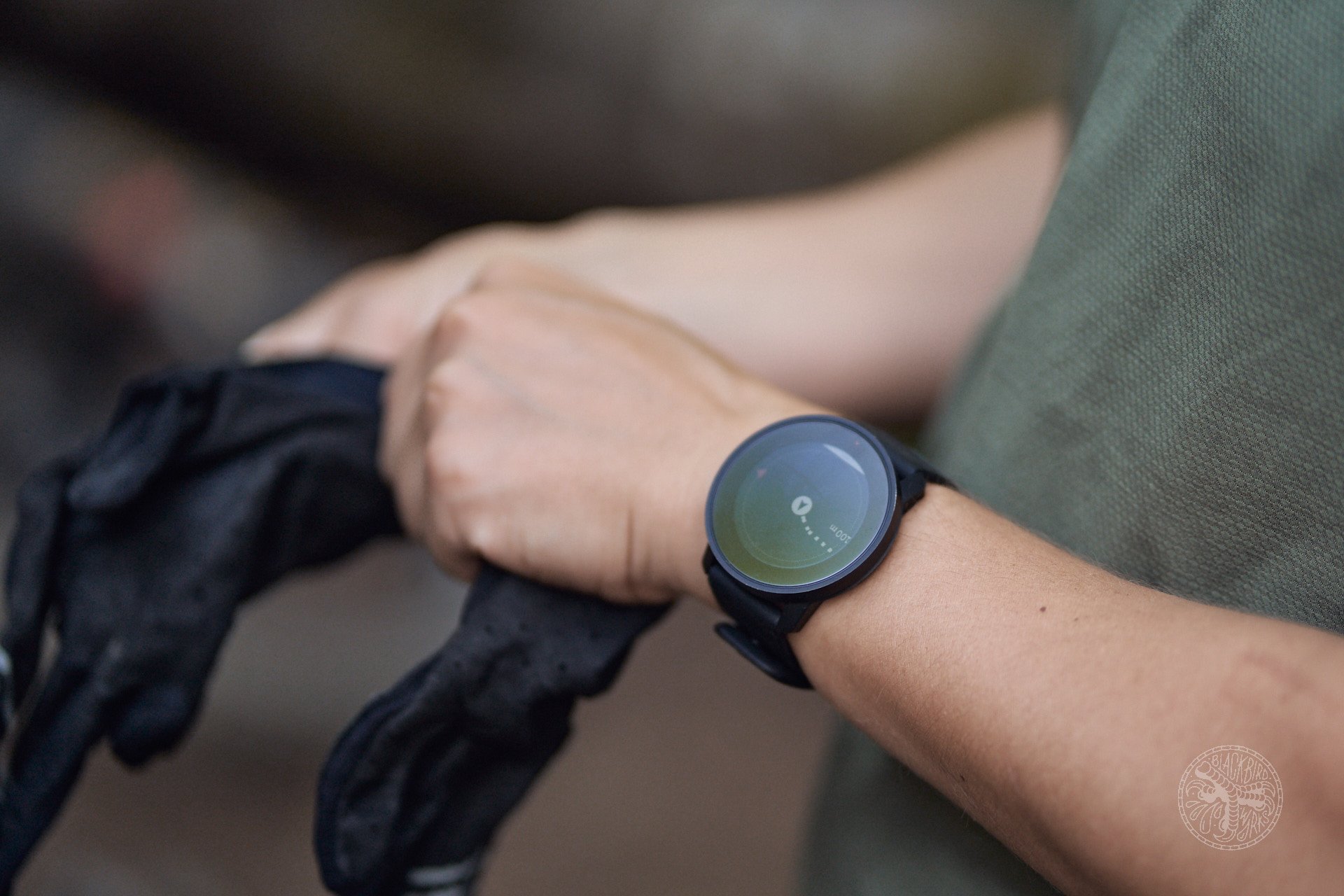
Navigating with the 9 Peak Pro may be challenging with the map size
Heart Rate Accuracy
Using an optical heart rate measurement is fine, until it's not. Everything seems accurate until you actually pay attention to the data you're provided. I noticed the discrepancies the most during weight lifting. After finishing a set, I would check my wrist and only after I stopped moving would my heart rate start to climb, leaving me to believe it wasn't registering my heart rate while actually performing the activity.
Optical heart rate accuracies can be affected by many things including where it is placed on your skin, how much hair you have, how much you sweat, arm movements, flexing, skin pigmentation or tattoos. In other words, there is a lot of room for error. In the product and safety regulatory information booklet, Suunto recommends wearing a compatible chest heart rate sensor for higher accuracy and quicker responses to changes in hear rate.
Throwing on a chest strap is certainly more accurate and is quicker at picking up variations in heart rate. Testing this on a gravel ride, I had my chest strap connected to my Garmin 520 for comparison and the chest strap was always much quicker to respond to an increase or decrease in heart rate compared to the optical heart rate on the 9 Peak Pro. This isn't unique to Suunto's product, but rather for all optical heart rate monitors.
Suunto App
Navigating and analyzing data in the Suunto app is easy and visually pleasing due to the colour coding of activities. The home page gives you a general overview of your training progress with customizable widgets so you can see the data most important to you. Opening the calendar gives you a visual representation of your activities with varying sized bubbles that are colour coded to specific activities. Weekly, monthly or annual data can be easily analyzed. Opening up an activity will allow you to go into depth on specific features unique to that activity. You can also connect the app to Strava so your activities upload automatically. The only downside is there is no way to access your data through the web; it's only accessible through the app.
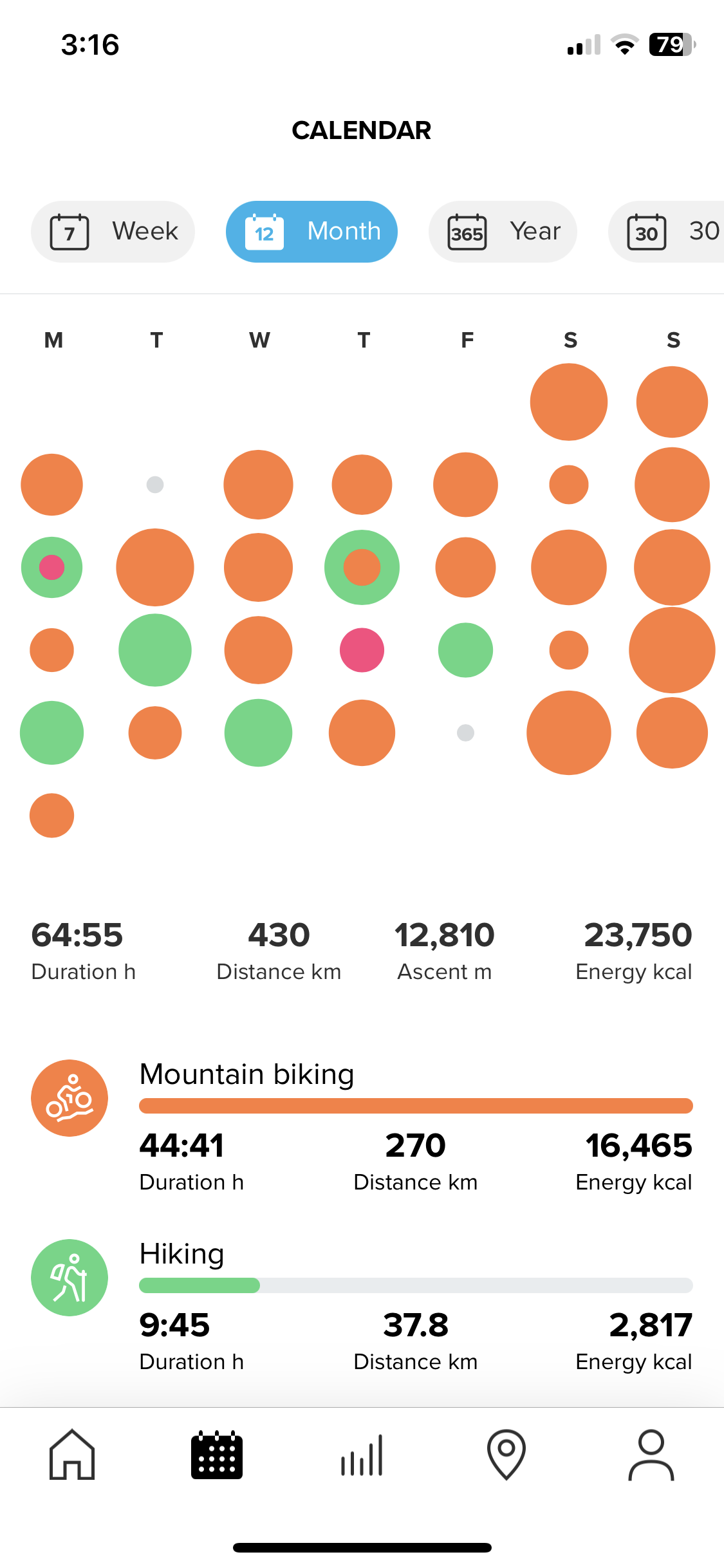
As a visual person, the app is great for analyzing my activity volume. July data.
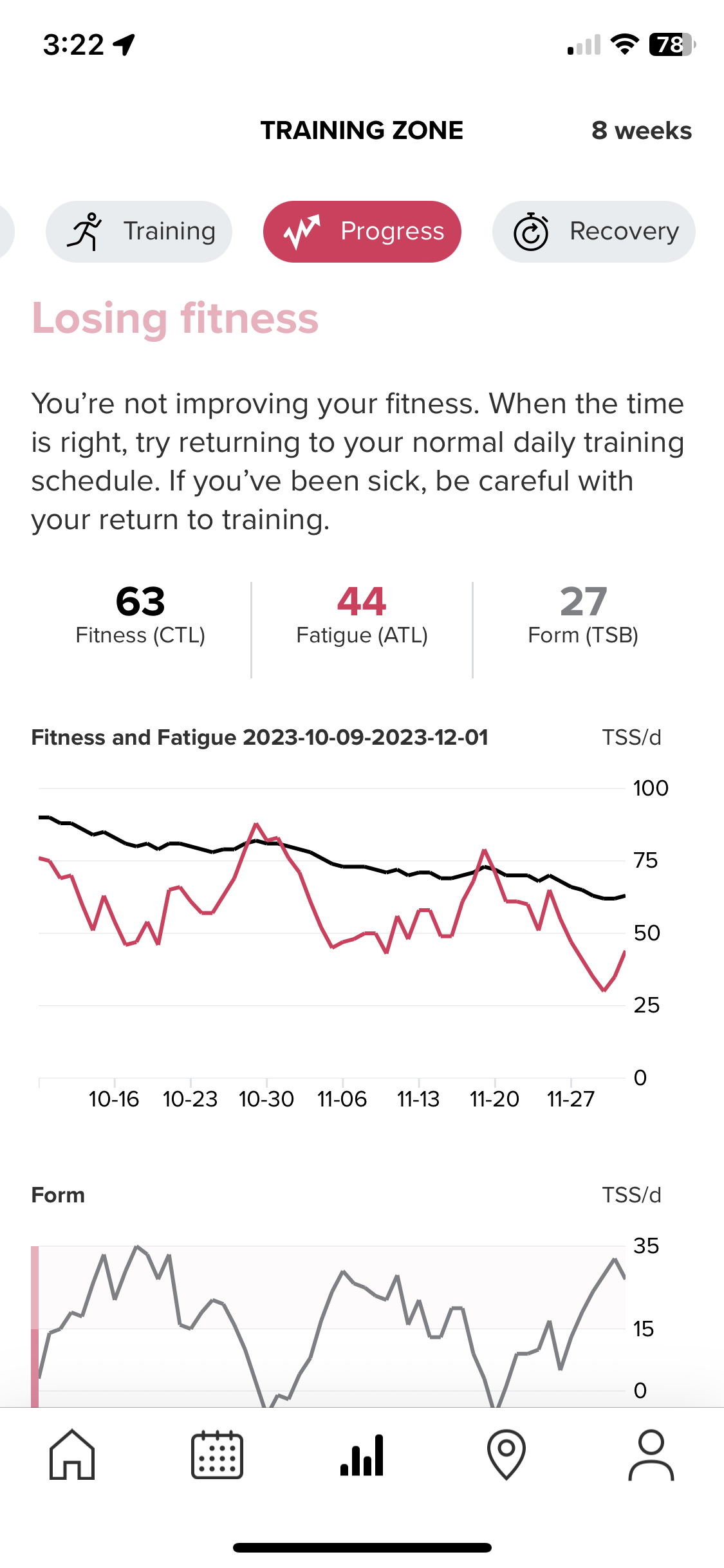
An unfortunate trend to see as an athlete. Have I peaked?
Migrating to the training zone displays a graph of your overall training progress that shows your fitness and fatigue levels. Fitness (Chronic Training Load) describes your long-term training load and gives you an overall trend of your fitness. Fatigue (Acute Training Load) describes your short-term training loads and shows how hard your recent workouts have been. So if you increase your training compared to usual, your fatigue will increase faster than your fitness. Additionally, you get a graph showing your Training Stress Score (TSS). Every activity gets a TSS score that is based on the intensity and duration of the activity. Throw it all together and you are given a graph that shows whether you are losing, maintaining or gaining fitness and a fourth category for overdoing it.
Now, I would love to believe the training data provided for me is 100% accurate, but my training stress scores are based on heart rate data and as I just mentioned, I have doubts on their accuracy. Additionally, after starting a 6 week training program for an enduro race, I had little to show for it according to the app. I would hardly call it a strict training program, but I did increase my overall volume and included some decent time at the gym and on bike intervals. I think the most important thing to note is that I physically felt stronger and fitter after these extra additions to my regular schedule.
The app, however, did not validate my feelings as I have yet to break out of the ”keeping fit” category and into the “making progress” category. Perhaps my training isn’t strict or long enough for Suunto to recognize it as progress or maybe it’s due to the heart rate discrepancies. On the opposite spectrum, the app spared no time throwing me into the “losing fitness” category after a week of being sick with a cold where I decreased my volume. Ouch.
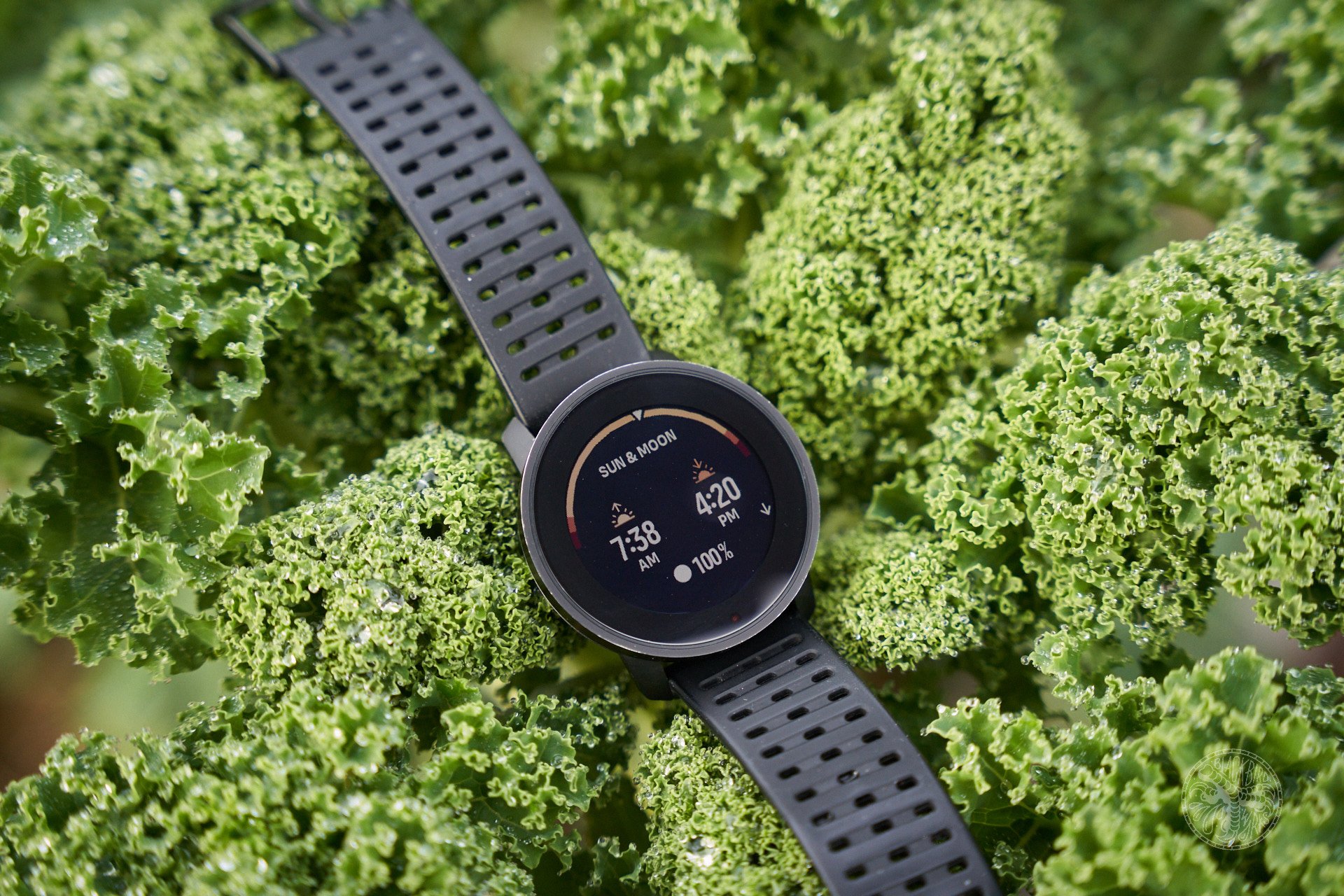
One of my favourite screens with some depressing November daylight times. The full moon is a bonus, however.
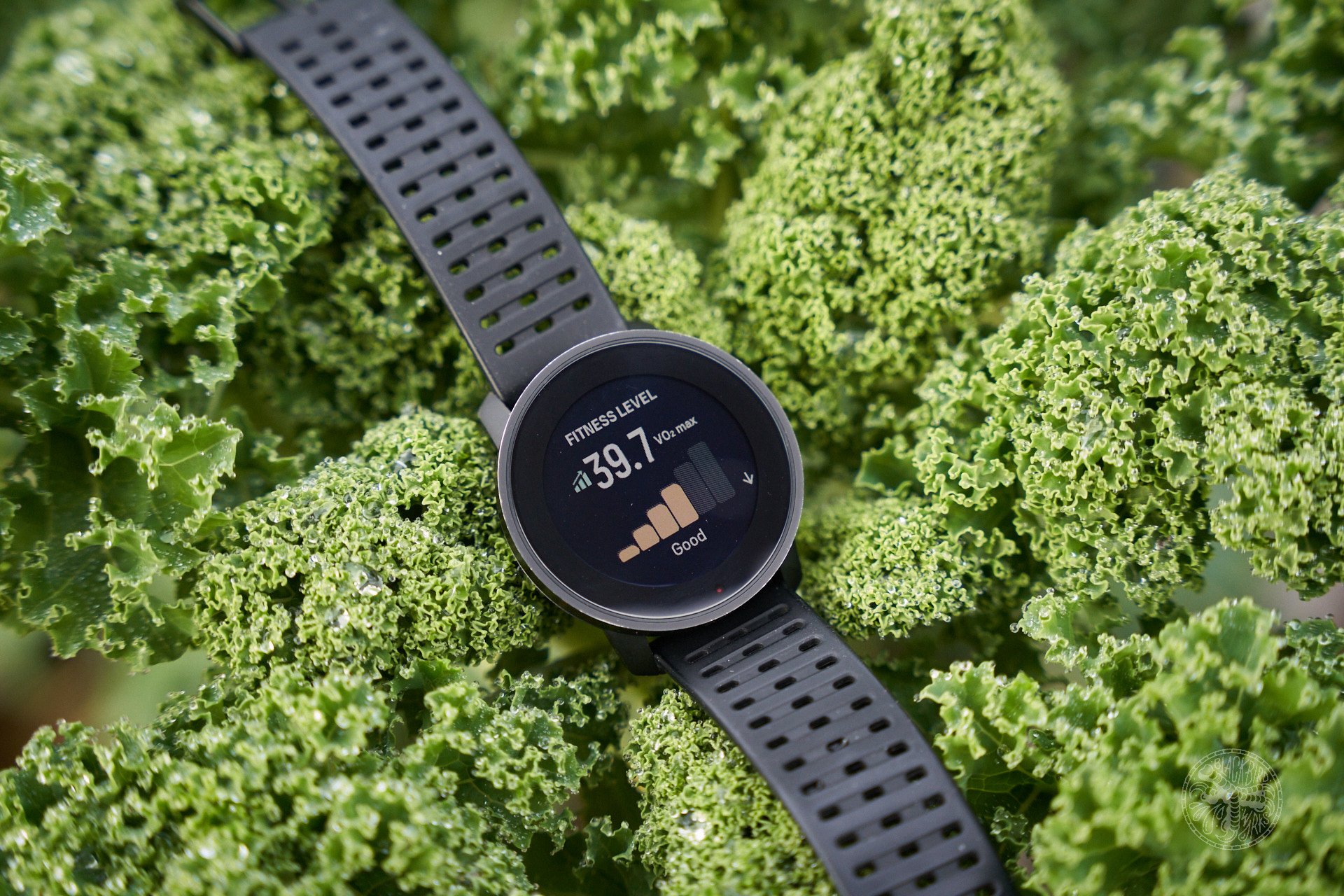
The watch gives you an estimated V02 max. Mine used to be 'Great' when I was peaking...ugh
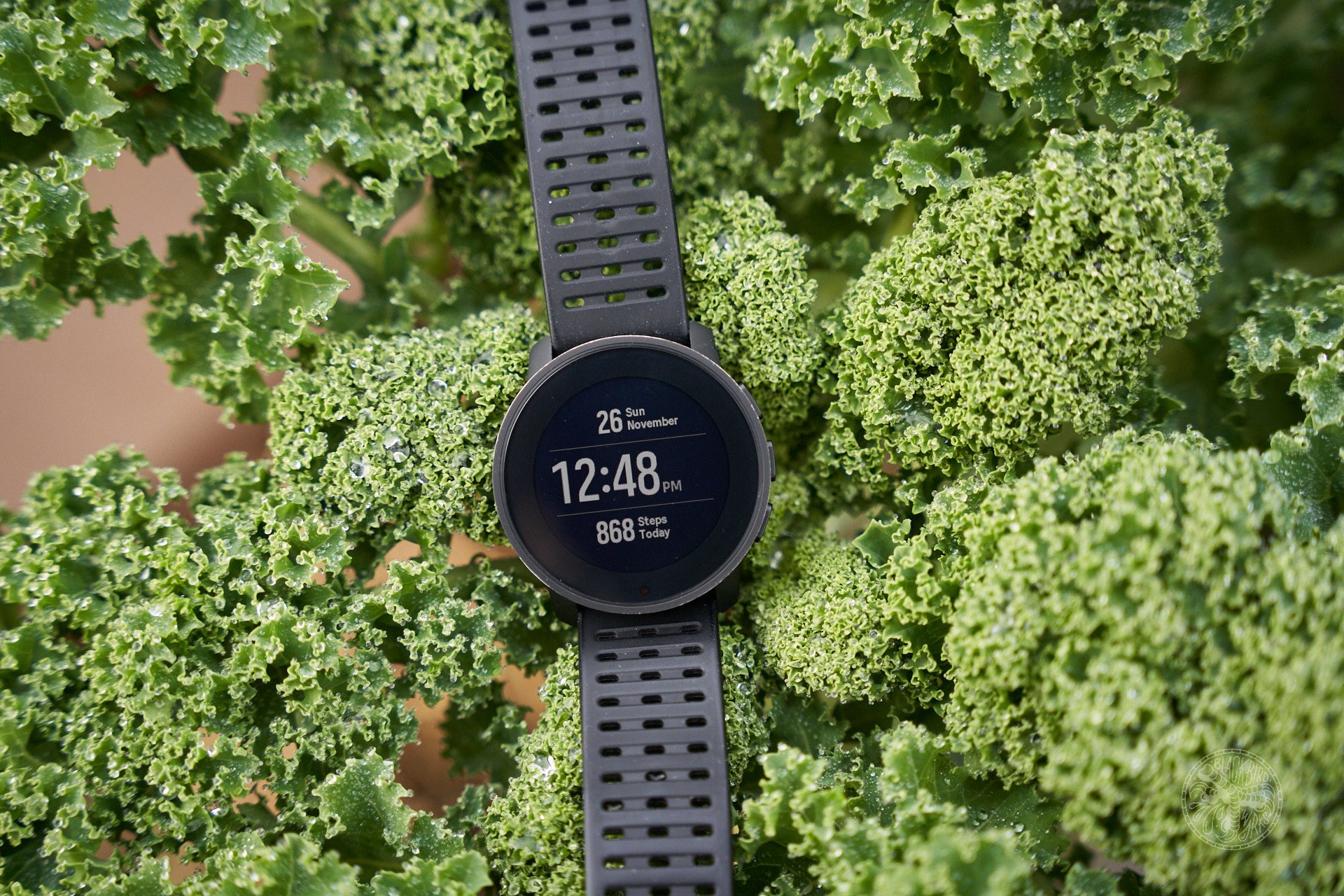
A simple home screen that can be customized
Miscellaneous
The watch does not come with maps but you can download a route or use the breadcrumb navigation feature. I did test this map feature and it was as decent as toonie-sized maps get. For big bike exploratory missions I always have maps on my phone but I can understand that runners in particular would download a route and leave the phone at home.
On a random note, it is impossible to crop an activity in the Suunto app. If you want to crop your activity because you forgot to stop it and drove 50km home, then you’ll have to download the gpx file, crop it, then re-upload it to the app which is more than annoying to do. I found that out the hard way, numerous times.
Conclusion
I think the Suunto 9 Peak Pro has a lot of potential for an active person who wants a functional multisport watch with a minimalist design. I do not believe, however, that it is the right watch for someone whose main activity is mountain biking. The limitations really are in the physical design when placed in an environment of constant impact and vibration. It’s unfortunate, because the potential is there. The watch is beautiful and has an abundance of features, great GPS accuracy, a killer battery life and a genuinely enjoyable user experience.
I will continue to use the 9 Peak Pro as I enjoy what it has to offer but I will be selective when to wear it for mountain biking. At its current discounted price, this watch is certainly more reasonable to consider among many other options.
The Suunto 9 Peak Pro is currently on sale for $509 CAD down from $699 CAD available here.
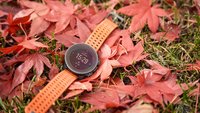
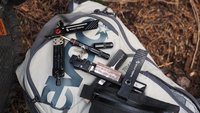

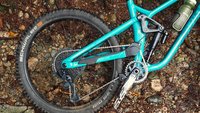
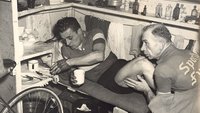
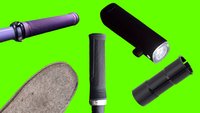


Comments
Allen Lloyd
1 month ago
I have been saying for years there should be left and right watches. I wore a Timex Weekender for 20 years, it created a dent in my hand where the turny thing rubbed. I switched to a Garmin and now half the time I look at my watch it is getting ready for me to go for a run because the back of my hand has pressed a button.
Especially with smart watches just make it so there are knobs / buttons on one side then let me flip it so the buttons are always on the top side. Sorry this review points to something that bothers me way more than it should.
Reply
Flatted-again
1 month ago
I’m with you. The only watch that’s worked for me on a bike (including both watches and smartwatches) is the Apple Watch, and it’s just because I can swap the side the crown is on.
Edit: there are left and right watches out there, but they’re less common.
Reply
BarryW
1 month ago
As a lefty I've just adjusted to wearing my watch on my left (dominant) hand and it solves most of those issues.
I also wear mine quite high, which probably made the switch to a smart watch easier. I do have to say that for the money an Apple watch isn't a bad option here. I find it easily works all day and I charge each night. And it's a great addition to my phone, and has real maps...
Reply
mrbrett
1 month ago
I seriously hope you have an automatic watch.
Reply
Jan
1 month ago
here for the kale
Reply
Deniz Merdano
1 month ago
Fresh Kale has the structural integrity of concrete pillars. The Suunto presented no challenge!
Reply
ketchupchips
1 month ago
Watch salad
Reply
Frorider
1 month ago
I greatly appreciated the recent nsmb review of the suunto vertical’s various flaws, including the fact that it cuts away at your flesh enough that you’re tempted to throw it in the garbage. Nice to see that suunto also designed the peak 9 to be unwearable…it’s great when a brand makes bold design decisions ;).
Reply
mrbrett
1 month ago
What does the activity type "mermaiding" involve, exactly?
Reply
Emma Le Rossignol
1 month ago
I would also love to know
Reply
Lu Kz
1 month ago
I think it was a swimming fad a few years back.
Reply
OldManBike
1 month ago
Optical HRM inaccuracy is a surprisingly big limitation on the usefulness of these watches for biking. I have a high-end 2023 Garmin model (Epic 2) that's crappy at measuring HR on rides. Mostly it's way too low, so that when my heart is ready to explode out of my chest the watch thinks I'm barely pushing. But then sometimes it's way too high, so that when I'm just turning the pedals on my ebike the watch thinks I'm approaching death. And that's a bigger problem than it seems at first. The problem isn't just that you're not getting accurate heartrate data at any given moment, but that the way-inaccurate heartrate data you're getting throws off all the other cool data the watch gives you, tracking the intensity level of that one ride and your overall exercise load and fitness level over time. That's all solvable by wearing a chest strap every time you ride, and if that's what you're going to do then you can pretty much ignore what I'm saying here. But I don't feel like doing that for my daily commute, and sometimes I forget it on mtb rides too. So, for me, the one little thing that the watch sucks at (measuring HRM on rides) ends up dramatically reducing the usefulness of the watch overall.
Reply
DanL
1 month ago
And it's pretty much the same for so called "sleep tracking" which has little to do with the actual value/purpose of the sleep you're getting, they just track "sleep efficiency".
Reply
Cooper Quinn
1 month ago
Let me guess - readings in the 80-90 range?
Its cadence-syncing with your pedaling, instead of hear rate. And yep, there's no way around electro-HRM's like chest straps being WAY more accurate and precise.
Reply
OldManBike
1 month ago
Interesting theory. Is that a thing? I don’t think that what mine’s doing, seems like mine’s around 120-130.
Reply
Dan
1 month ago
I continue to appreciate an honest, no-holds-barred review.
To me, round watches - especially large diameter round watches - are simply incompatible with our favorite activity.
Reply
snorris
1 month ago
I used to wrap my Fenix2 around my mtb stem to avoid the gouge. Ideal apart from twisting my head to read.
Stems are generally too short for that now - a small roll of inner tube secured around the bar with electrical tape works nicely - and no head twisting required.
Reply
Sweaman2
1 month ago
Garmin sell an actual adapter for this. Type "garmin handlebar watch mount" into your browser of choice and it's $13 from MEC. If I'm honest I don't see the attraction of riding with the watch on my wrist so I mount mine on the handle bars with a chest mounted HR.
Reply
kekoa
1 month ago
Have to say I’ve appreciated the honest Suunto reviews from a MTB perspective. I’ve enjoyed my Suunto watches over the years and can certainly attest to their quirks. The other night while sleeping it downloaded a new OS and once I was up and coherent I had to relearn where everything was. The sleep tracking seems to be all over the place and it annoys me to no end that when the watch finally realizes that I’m up tand he sleep summary screen pops up and won’t go away until I actually interact with it. When I’m biking I have it mounted in my handlebar and I wear a chest strap. It’s easier to glance down at the watch mounted on the bar then try to focus on my wrist. If this watch died tomorrow I’d get a different brand.
Reply
mutton
1 month ago
Cool review thanks! For me this validates my recent decision to go with a smaller watch (garmin 265) as I had experienced similar wrist pain borrowing my wife's larger suunto. The downside is clearly battery life (3 days). Sleep data is a waste of time for me too...if the watch is so smart why do I need to "turn off" sleep mode when I'm making breakfast (?). Gps / distance / elevation etc on the bike and hiking are good enough for me.
I mostly miss the suunto app (which I used with a heart rate strap linked to my phone). I found the whole training load / stress scores to be a fun motivation / self check tool that often vindicated how my body felt and either got me to chill out or get out!! The garmin app doesn't work as well for me.
Reply
Emma Le Rossignol
1 month ago
Glad to hear you also like the Suunto app, it has some great features and is definitely motivating to capture all my training in one spot. The battery life of this watch seems hard to beat...it's a beast.
Reply
DanL
1 month ago
You may find that one of the aftermarket straps will offer you better "accuracy" for wrist sizes - I swapped mine out after one of the strap retainers and the cheaper amazon one has a lot of small holes which made getting the right fit very easy.I do wish that Suunto could release a flipped display so I could wear the watch backwards for weight training and cycling so I didn't accidentally touch the buttons though when my wrist is at right angles.
Reply
Emma Le Rossignol
1 month ago
Good to know, will look into the aftermarket straps. I luckily haven't accidentally hit any buttons yet but can see that happening for bigger hands with flexibility.
Reply
DanL
1 month ago
Pushups are the biggest issue for accidental pressing.
Overall, I'm enjoying the Baro9 (pretty similar to the Peak) and the battery life + gps performance has been stellar - but it's main use case has been (apart from elbow pads) much more for hiking, camping, snowboarding and general exploring. I didn't buy it with riding in mind, but I have adapted to it more.
Not being able to easily trim routes is a very annoying issue, but hopefully one which will get addressed.
Unfortunately, heart rate readfins are always less accurate on a watch compared to a strapped on one, I tend to use the zones as indicators and usually calibrate in my head what the displayed BPM is, like recalibrating what my floor pump says is 20psi.
Strapping that big lump to my wrist for MTB is ok for the riding I generally do apart from it not sliding under elbow pads but it comes off straight away if I'm in the bike park as I end up with major bruising.
One other reason behind getting this size watch is it's essentially "large print" so I can easily read it with my deteriorating vision haha
Reply
Aaron Weiss
1 month ago
best to lock out the screen on the activity to avoid this happening. on the vertical it is a long press of the lower button. should be the same on the peak pro
Reply
sverdrup
1 month ago
Anybody used an Apple Watch Ultra and have any thoughts? I am in the market for a fitness tracker and intrigued by the new cycling-specific features. Garmins all seem ugly with overly complicated UI to me, and I am already heavily bought into the Apple ecosystem.
Reply
Ray Freeman
1 month ago
I've been using the Ultra for about a year. If I bend my wrist upward, it can trigger the Action button. It doesn't happen to me often, but is a minor annoyance. Also, I find the edge of the watch can bounce against the back of my hand. I wear gloves, so this is not much of an issue. I really like the Strava real-time tracking and how it automatically can tie into FatMaps. Heart rate monitor seems to work well enough...this is especially helpful in hotter weather for me. The phone function is also superior to the other Apple watches with better mics and speakers. As a side note, the compass works reasonably well for sea kayaking. I look forward to better mapping in the future.
Reply
jhtopilko
1 month ago
I'm happier with any plastic watch vs the metal ones. I use an instinct solar and have contemplated other options as long as they are plastic. I've considered suunto a few times but I'm too familiar with Garmin to change. Does Suunto have a plastic watch to test with a smaller screen that may fit better and be bloodless? ;)
Reply
Deniz Merdano
1 month ago
I too find the Instinct Solar significantly more comfortable and in some ways way more functional firmware wise too.
Reply
BC_Nuggets
1 month ago
I don't wear a watch because the man tells me to. Time is an illusion anyway.
I have an Apple Watch which isn't great for mtb really and the article's discussion on the ineffectiveness of these sorts of heart rate monitors explains the confusion I have when I'm convinced my heart must be full of lard and plaque.
Reply
Rick M
1 month ago
Good grief, I missed all the drama above. The article was well written with honest feedback. Anyway, I have an older, lower model Suunto 5 that I experience the same issues with the optical HRM. For 20 years I've owned many activity watches that have honestly provided little insight into my training (marathons, enduros, trail running, weight training, CrossFit, etc). Even though fitness is part of my job, I don't need a serious watch or service (Whoop) to tell me when I'm losing or gaining. My conclusion is that these devices are cool toys that remind me what I did last Tuesday, or when I last rode that trail someone mentioned at a party.
Reply
Aaron Weiss
1 month ago
This comment has been removed.
Pete Roggeman
1 month ago
So...what's the flaw in the reviews? Just that they didn't match your experience?
Nice to know that at least one of us out there is entirely perfect and never forgets to do anything, ever.
Reply
Aaron Weiss
1 month ago
This comment has been removed.
Emma Le Rossignol
1 month ago
Glad to hear you enjoy the Suunto watches. There were a lot of things I like about this watch and, like I mentioned, the app is certainly one of them. Not everyone has access to a heart rate strap, so it's important for readers to understand that optical heart rate data is flawed and that should be taken into consideration when analyzing or making decisions off this training data.
It doesn't seem unreasonable to be able to edit an activity within an app that created it. Was more a funny comment but perhaps I'm just a narp for not ending my ride when I'm finished.
Reply
Aaron Weiss
1 month ago
This comment has been removed.
Aaron Weiss
1 month ago
I find it weird that they don't include the HR strap when that measurement of HR is far superior. I don't think that it is a stretch to assume that someone spending $500 and up on a watch is looking for accurate HR measurement either. When you edit the rides, are you doing that through strava when they get pushed over to that platform? I think that is likely the easiest way to go. What I find strange about the suunto line is that a lot of complaints about the watches are around the sleep tracking and since the recent update, I've found that tracking to be really good. I haven't suffered the same annoyances as others with the vertical. Not sure if I am just lucky there.
Reply
Jerry Willows
1 month ago
@aaron weiss wanker
Reply
Aaron Weiss
1 month ago
This comment has been removed.
Jerry Willows
1 month ago
you didn't just disagree with the review but disrespected the review/reviewer a couple of times. That's why you are getting massively downvoted.
Reply
Please log in to leave a comment.